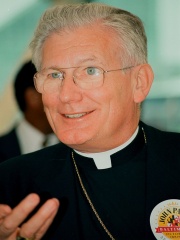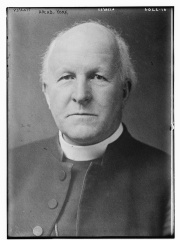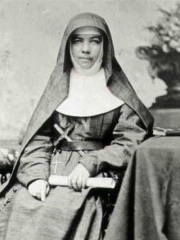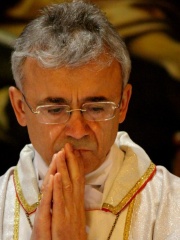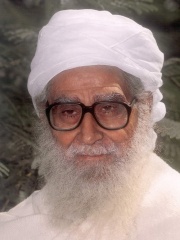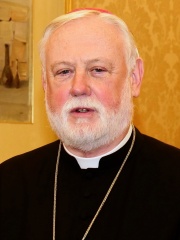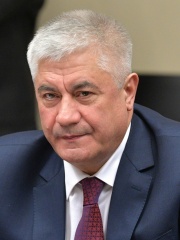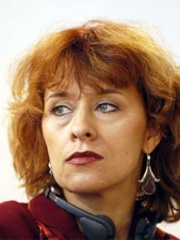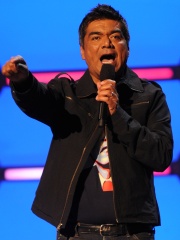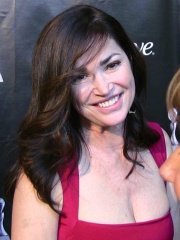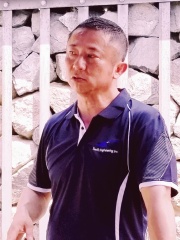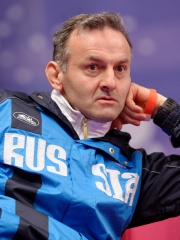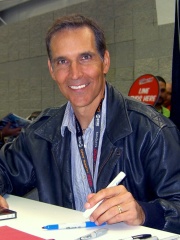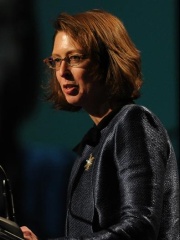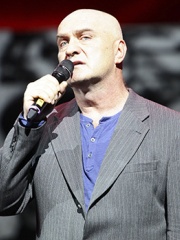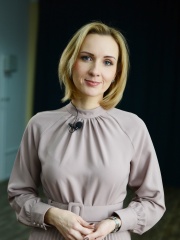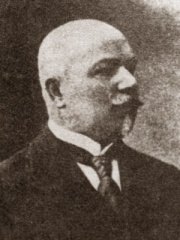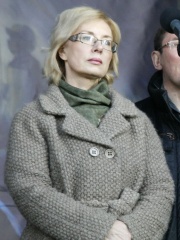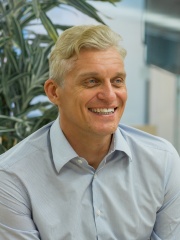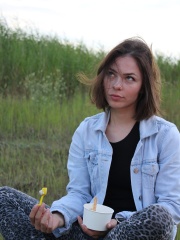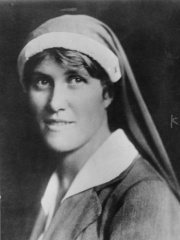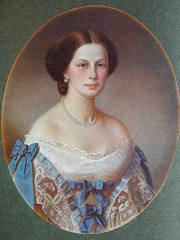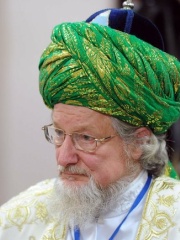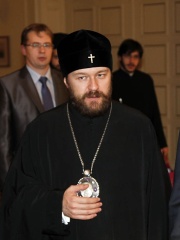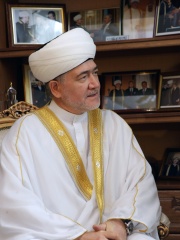RELIGIOUS FIGURE
Vissarion
1961 - Today
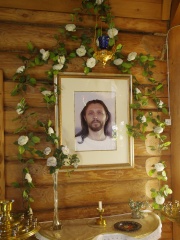
 Vissarion
Vissarion
Sergei Anatolyevitch Torop (Russian: Серге́й Анато́льевич То́роп, Sergej Anatolʹevič Torop; born 14 January 1961), known as Vissarion (Russian: Виссарио́н, IPA: [vʲɪsərʲɪˈon], "He who gives new life" or "life-giving"), is a Russian spiritual teacher and founder of the non-profit, religious organization Church of the Last Testament, described by many organizations as a cult.According to the followers of Sergei Torop and some of his own explanations, on 18 August 1990, at the age of 29, Sergey had a “spiritual awakening”.[1] He gave his first public teaching after awakening in Minusinsk on 18 August 1991. He founded the Church of the Last Testament (Церковь Последнего Завета Tserkov Poslednego Zaveta), also known as the Community of Unified Faith, with its head church located in the Siberian Taiga in the Minusinsk Basin east of Abakan, in the small settlement called Abode of Dawn (official name) or The Sun City (unofficial name) near Petropavlovka. Since then, the Christianity-based religious movement has amassed more than 10,000 followers around the world with around 4,000 living in the few settlements in Siberia near Vissarion.[2][3] As Vissarion, he teaches reincarnation, veganism, and harmonious human relations predicting the end of the world.Since 1991, on the basis of Vissarion's meetings, teachings and speeches, a multi-volume text called The Last Testament has been written, outlining a set of principles focused on self-improvement, self-governance and community.In September 2020, Vissarion and two of his close students were arrested and taken away from homes by helicopters during an operation by Russia's Investigative Committee. Read more on Wikipedia
Since 2007, the English Wikipedia page of Vissarion has received more than 700,443 page views. His biography is available in 19 different languages on Wikipedia (up from 17 in 2019). Vissarion is the 2,899th most popular religious figure (down from 2,602nd in 2019), the 2,269th most popular biography from Russia (down from 2,076th in 2019) and the 45th most popular Russian Religious Figure.
Memorability Metrics
700k
Page Views (PV)
44.44
Historical Popularity Index (HPI)
19
Languages Editions (L)
3.26
Effective Languages (L*)
2.73
Coefficient of Variation (CV)
Page views of Vissarions by language
Over the past year Vissarion has had the most page views in the English wikipedia edition with 60,728 views, followed by Russian (39,127), and Italian (6,364). In terms of yearly growth of page views the top 3 wikpedia editions are Italian (206.40%), Ukrainian (77.82%), and Portuguese (54.91%)
Among RELIGIOUS FIGURES
Among religious figures, Vissarion ranks 2,899 out of 3,187. Before him are William H. Keeler, Cosmo Gordon Lang, Mary MacKillop, Nechtan nepos Uerb, Youssef Rzouga, and Joseph Werth. After him are Johannes Weiss, Wahiduddin Khan, Rodolfo Quezada Toruño, Paul Gallagher, Gérard Mulumba Kalemba, and Wenceslao Padilla.
Most Popular Religious Figures in Wikipedia
Go to all RankingsWilliam H. Keeler
1931 - 2017
HPI: 44.69
Rank: 2,893
Cosmo Gordon Lang
1864 - 1945
HPI: 44.65
Rank: 2,894
Mary MacKillop
1842 - 1909
HPI: 44.59
Rank: 2,895
Nechtan nepos Uerb
501 - 620
HPI: 44.54
Rank: 2,896
Youssef Rzouga
1957 - Present
HPI: 44.53
Rank: 2,897
Joseph Werth
1952 - Present
HPI: 44.44
Rank: 2,898
Vissarion
1961 - Present
HPI: 44.44
Rank: 2,899
Johannes Weiss
1863 - 1914
HPI: 44.43
Rank: 2,900
Wahiduddin Khan
1925 - 2021
HPI: 44.43
Rank: 2,901
Rodolfo Quezada Toruño
1932 - 2012
HPI: 44.40
Rank: 2,902
Paul Gallagher
1954 - Present
HPI: 44.40
Rank: 2,903
Gérard Mulumba Kalemba
1937 - 2020
HPI: 44.40
Rank: 2,904
Wenceslao Padilla
1949 - 2018
HPI: 44.39
Rank: 2,905
Contemporaries
Among people born in 1961, Vissarion ranks 389. Before him are Jasmin Repeša, Vladimir Kolokoltsev, Jurga Ivanauskaitė, George Lopez, Kim Delaney, and Hiro Matsushita. After him are Angelo Mazzoni, Satoshi Tsunami, Danny Carey, Todd McFarlane, Abigail Johnson, and Lolita Davidovich.
Others Born in 1961
Go to all RankingsJasmin Repeša
SOCCER PLAYER
1961 - Present
HPI: 44.55
Rank: 383
Vladimir Kolokoltsev
POLITICIAN
1961 - Present
HPI: 44.52
Rank: 384
Jurga Ivanauskaitė
WRITER
1961 - 2007
HPI: 44.51
Rank: 385
George Lopez
ACTOR
1961 - Present
HPI: 44.47
Rank: 386
Kim Delaney
ACTOR
1961 - Present
HPI: 44.45
Rank: 387
Hiro Matsushita
BUSINESSPERSON
1961 - Present
HPI: 44.45
Rank: 388
Vissarion
RELIGIOUS FIGURE
1961 - Present
HPI: 44.44
Rank: 389
Angelo Mazzoni
FENCER
1961 - Present
HPI: 44.42
Rank: 390
Satoshi Tsunami
SOCCER PLAYER
1961 - Present
HPI: 44.40
Rank: 391
Danny Carey
MUSICIAN
1961 - Present
HPI: 44.37
Rank: 392
Todd McFarlane
COMIC ARTIST
1961 - Present
HPI: 44.35
Rank: 393
Abigail Johnson
BUSINESSPERSON
1961 - Present
HPI: 44.27
Rank: 394
Lolita Davidovich
ACTOR
1961 - Present
HPI: 44.23
Rank: 395
In Russia
Among people born in Russia, Vissarion ranks 2,269 out of 3,761. Before him are Viktor Vinogradov (1894), Daniil Kvyat (1994), Aleksandr Baluev (1958), Vera Komisova (1953), Yelena Safonova (1956), and Maria Lvova-Belova (1984). After him are Vasily Goncharov (1861), Lyudmyla Denisova (1960), Oleg Tinkov (1967), Nina Kraviz (1987), Leonid Shcherbakov (1927), and Aleksandr Nikolayevich Balandin (1953).
Others born in Russia
Go to all RankingsViktor Vinogradov
LINGUIST
1894 - 1969
HPI: 44.51
Rank: 2,263
Daniil Kvyat
RACING DRIVER
1994 - Present
HPI: 44.49
Rank: 2,264
Aleksandr Baluev
ACTOR
1958 - Present
HPI: 44.48
Rank: 2,265
Vera Komisova
ATHLETE
1953 - Present
HPI: 44.47
Rank: 2,266
Yelena Safonova
ACTOR
1956 - Present
HPI: 44.46
Rank: 2,267
Maria Lvova-Belova
POLITICIAN
1984 - Present
HPI: 44.44
Rank: 2,268
Vissarion
RELIGIOUS FIGURE
1961 - Present
HPI: 44.44
Rank: 2,269
Vasily Goncharov
FILM DIRECTOR
1861 - 1915
HPI: 44.44
Rank: 2,270
Lyudmyla Denisova
POLITICIAN
1960 - Present
HPI: 44.43
Rank: 2,271
Oleg Tinkov
BUSINESSPERSON
1967 - Present
HPI: 44.43
Rank: 2,272
Nina Kraviz
SINGER
1987 - Present
HPI: 44.42
Rank: 2,273
Leonid Shcherbakov
ATHLETE
1927 - 2004
HPI: 44.38
Rank: 2,274
Aleksandr Nikolayevich Balandin
ASTRONAUT
1953 - Present
HPI: 44.38
Rank: 2,275
Among RELIGIOUS FIGURES In Russia
Among religious figures born in Russia, Vissarion ranks 45. Before him are Elsa Brändström (1888), Nikolay Ilminsky (1822), Anna Filosofova (1837), Talgat Tadzhuddin (1948), Grigory Rodchenkov (1958), and Hilarion (1966). After him are Rawil Gaynetdin (1959).
Elsa Brändström
1888 - 1948
HPI: 50.11
Rank: 39
Nikolay Ilminsky
1822 - 1891
HPI: 49.52
Rank: 40
Anna Filosofova
1837 - 1912
HPI: 48.85
Rank: 41
Talgat Tadzhuddin
1948 - Present
HPI: 47.13
Rank: 42
Grigory Rodchenkov
1958 - Present
HPI: 46.72
Rank: 43
Hilarion
1966 - Present
HPI: 45.07
Rank: 44
Vissarion
1961 - Present
HPI: 44.44
Rank: 45
Rawil Gaynetdin
1959 - Present
HPI: 42.68
Rank: 46
